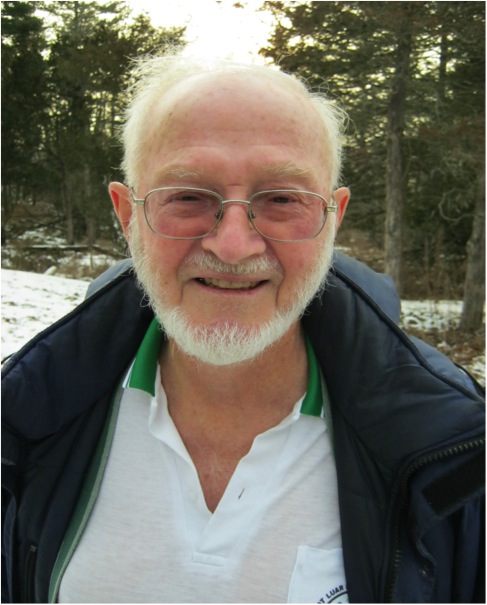With great spring weather promised over the long week-end, I looked forward to doing my Birdathon where I had started birding in the late 1940s, in the Kingston area as a member of one of the teams that take part in the Kingston Field Naturalists’ annual spring round-up. Someone reminded us of how our birding knowledge had increased since the early round-ups – in the 1950s and 1960s teams had to struggle to get 100 species, whereas now we can expect to get 140-160 species in a 24-hour period.
Our team – Paul Mackenzie, Bruce Ripley, Lyn Bell and myself – planned to position ourselves at the north-east corner of the KFN property on Amherst Island for the 3 pm starting time, picking up the water- , shore- , and field birds we had scouted on the way out. We were somewhat disconcerted by the masses of midges which quickly covered our clothes, our eyelids, and our equipment as we walked out, but luckily they did not get smeared on the lenses of our binoculars and scopes.
Shortly before 3, a Night Heron flushed and disappeared into the reeds, and then a Blue-winged Teal flew arounda corner into a little bay. At 3:00 we began counting – five species of ducks, a handful ofshorebirds including the phalaropes which had led to the KFN’s acquiring the property, and assorted swallows, sparrows, and other species – but the heron and teal were nowhere in sight. Fortunately, as we walked out, a 5-minute detour flushed the heron, but there was no sign of the teal.
The Owl Woods produced most of its expected species, and on the road in we found two surprises, an Olive-sided Flycatcher and an Orchard Oriole. Bruce’s MP3 provoked a pheasant to call back from across a field, and later an American Bittern flew briefly ahead of us before diving into a small marsh. We left Amherst Island at 6 pm with a list which was modest, but which included several species we were not to see or hear again.
The roads around Yarker, Newburgh, and Camden East produced a number of hard-tofind species such as Chimney Swifts, Nighthawks, a Clay-coloured Sparrow, and a Vesper Sparrow, the last not singing, but coming quietly onto the road to investigate his MP3 rival. We also finally found a male Blue-winged Teal at one pond – the only one for the trip. At 10 pm we called it a night and headed home for a few hours’ sleep. At 2:30 we were on our way again. At the first of several stops along the Canoe Lake Road, when we played a Great Horned Owl call, we had not one but two Barred Owls hooting back, which seemed rather courageous/foolhardy on their part. As the sky lightened, the dawn chorus began; we picked up a Veery, several Wood Thrushes, assorted warblers including a Louisiana Waterthrush, and our only White-throated Sparrow of the day, though oddly enough, no Cerulean Warblers, even though Paul had heard several on a scouting trip three days earlier.
Then it was on to Prince Edward Point, which we expected would produce a variety of migrants, as well as a few special residents. While not as spectacular as during some heavy waves of migrants, the point and Point Traverse woods did not disappoint; we logged 19 species of warblers, including large numbers of Blackpolls, Bay-breasts, and Blackburnians, as well as a Parula with an almost Prairie Warbler-like song, and numbers of Long-tailed Ducks and White-winged Scoters offshore. Oddly, however, we saw hardly any migrant thrushes; two Swainson’s, no Grey-cheeks, Veery, or Wood Thrushes at all.
As the clock moved toward 3 pm, we found ourselves heading down the Ostrander Point road in search of the last few species we had missed; in the wet bushy area near the shore, we heard our last species of the day, a Willow Flycatcher, and wondered how he and the other residents will fare when the government rams through its massive wind farm project on their wetland.
The total number of species seen by one or more members of our team was 154; my personal total of species seen or heard was 150.
My special thanks are due to Paul, not only for scouting several areas in advance, but also for spotting a number of good species, and above all, for doing almost all the driving; also to Bruce for his keen ear which caught a number of the high-pitched little songs like the Blackpoll Warbler as we drove along.
